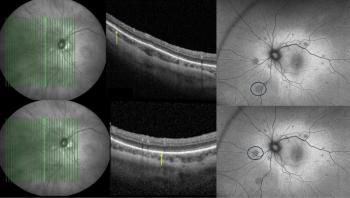
Pearls to manage surgery patients on antithrombotic drugs
Different steps may be needed during the perioperative period to ensure the best outcomes for patients.
Patients who undergo an ophthalmic procedure and are concomitantly taking antithrombotic drugs, i.e., antiplatelets and anticoagulants, during the perioperative period may require different management than patients not taking those drugs.
Investigators at
A.K. Makuloluwa, MD, et al. reported in
A startling finding was that “40% [of ophthalmologists] were unaware of existing guidelines” for managing these patients. The authors’ concerns regarding this matter are well-founded in that, for example, within the aging population, more patients are taking these drugs to prevent and treat cardiovascular and ischemic cerebral disease.
“Continuing anti-thrombotic agents perioperatively may increase the risk of potentially sight-threatening haemorrhagic complications, whereas discontinuing these medications may increase the risk of life-threatening thromboembolic events,” investigators noted. “Therefore, it is important to understand the indications of anti-thrombotic agents and when it may be safe to discontinue them perioperatively.”
RELATED CONTENT:
Statify surgeries
The team said it believed that it was important to stratify the ophthalmic surgeries depending on the risk of development of hemorrhagic complications during the perioperative period. They conducted a PubMed search from January 2007 to August 2017 to identify articles that provided recommendations on managing antithrombic agents during the perioperative period of ophthalmic surgeries and reviewed the incidence rates of the associated hemorrhagic complications.
They also reviewed all guidelines in the UK from the
Study findings
The literature recommendations that all anti-thrombotic agents be continued for routine cataract surgeries performed under topical or sub-Tenon’s anesthesia. For sharp-needle anesthesia, the literature recommended that surgeons avoid dual antiplatelet therapy and patients could continue taking warfarin if the International Normalized Ratio (INR) was within the therapeutic range.
Also by Lynda Charters:
For
“It is also important to consider and recognize that, intraoperative and post-operative haemorrhagic complications in glaucoma, especially if sustained or prolonged, can cause severe visual loss due to high pressure in already compromised optic nerves,” investigators wrote. “Anticoagulants should be discontinued with consideration for bridging therapy depending on patient’s risk factors.”
For vitreoretinal surgery, the literature results were considered controversial.
“The recommendations for perioperative management is similar to that for
Related:
High-risk areas
For oculoplastic and lacrimal surgery, procedures that are carried out posterior to the orbital septum and deep orbital surgery are associated with potentially sight-threatening hemorrhagic complications, and lacrimal surgery also is considered a high-risk procedure. Procedures that are performed anterior to the orbital septum are considered low risk.
“Expert groups on oculoplastic surgery recommend stopping anti-thrombotic agents during blepharoplasty, lacrimal surgery and deep orbital surgery as these are considered high risk for sight-threatening haemorrhagic complications,” the investigators noted.
For strabismus surgery, the recommendations are similar to those for
The authors proposed their pathway for managing patients taking antithrombotic drugs. For low-risk procedures (sub-Tenon/topical cataract, corneal, chalazion, eyelid cyst/lesion removal, and strabismus surgeries), antiplatelets can be continued.
Related:
For anticoagulants, the INR should be check on the surgical day and warfarin continued if within the therapeutic range; the DOAC dose is stopped two days preoperatively (depending on renal function) and restarted one to two days postoperatively if adequate hemostasis is achieved.
For high-risk procedures (peri/retrobulbar anesthesia, glaucoma, vitreoretinal (pars plana vitrectomy), vitreoretinal procedures [oncology: endoresection, biopsy of intraocular tumors, plaques/markers], oculoplastics [blepharoplasty, post-septal eyelid surgery], and temporal artery biopsy surgeries], antiplatelets are stopped seven days preoperatively but continued in high-risk patients.
Prasugrel, a platelet-aggregation inhibitor [Effent in the United States; Efent in the European Union] is stopped seven days preoperatively, and Ticagrelor, [a platelet-aggregation inhibitor] five days preoperatively. For the anticoagulants (warfarin), the local anticoagulant service should be informed at the time of listing. If low risk (e.g., non-valvular atrial fibrillation), warfarin should be stopped two days preoperatively, the INR is checked on the surgical day, and continued if <2. Re-start on evening of surgery. If high risk, discuss with physician. For the DOACs, the recommended action is the same as for low-risk procedures.
Newsletter
Get the essential updates shaping the future of pharma manufacturing and compliance—subscribe today to Pharmaceutical Technology and never miss a breakthrough.













































